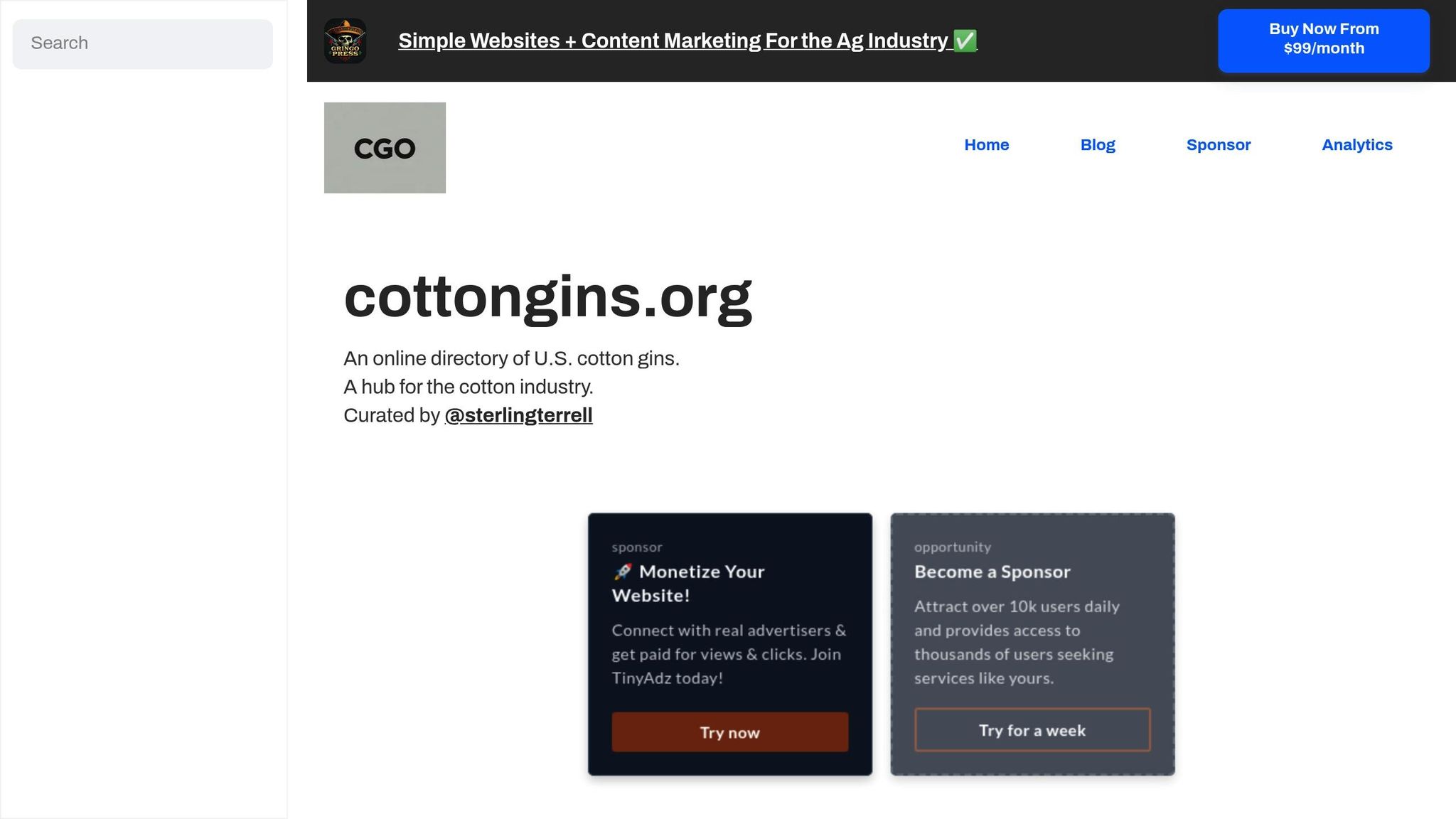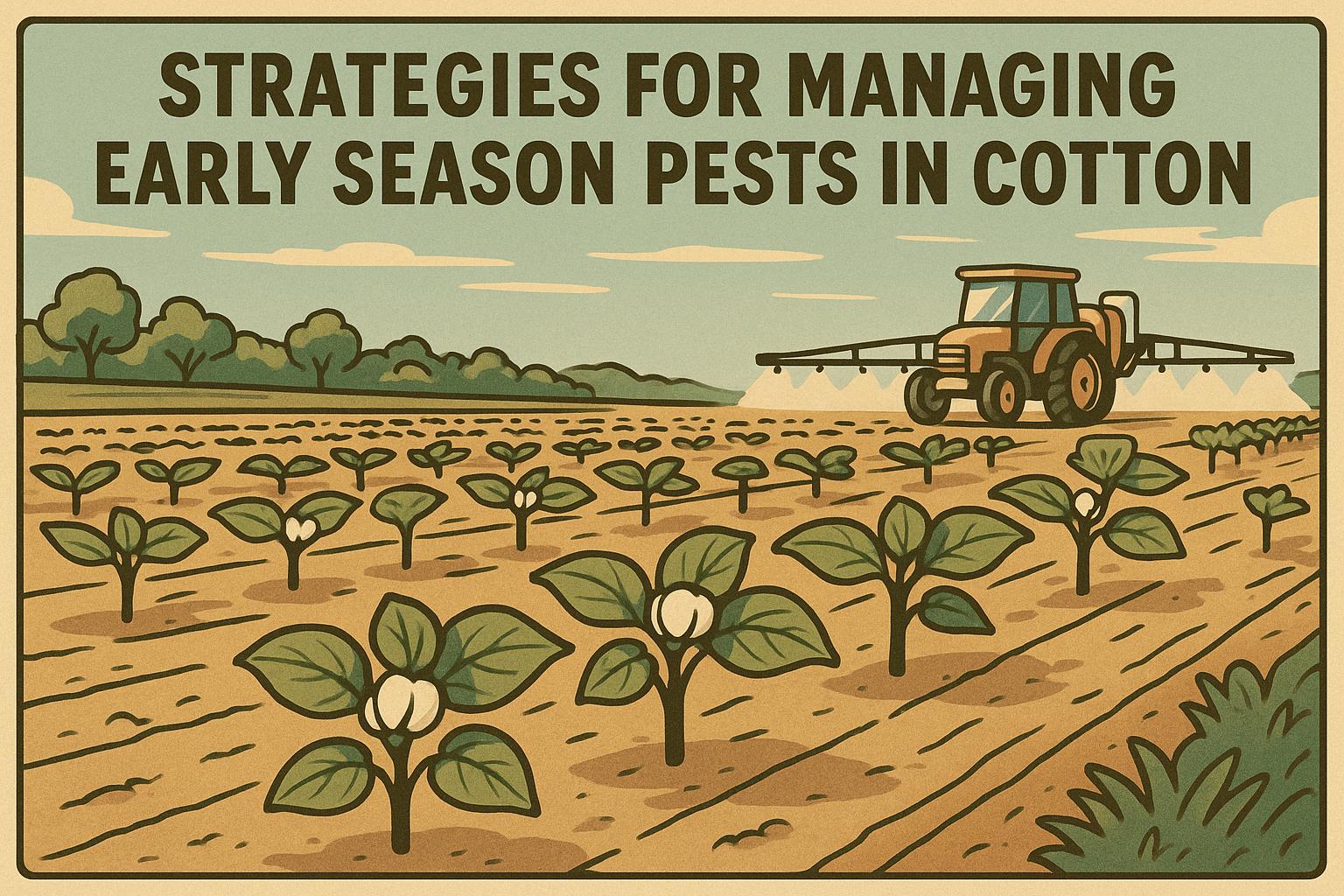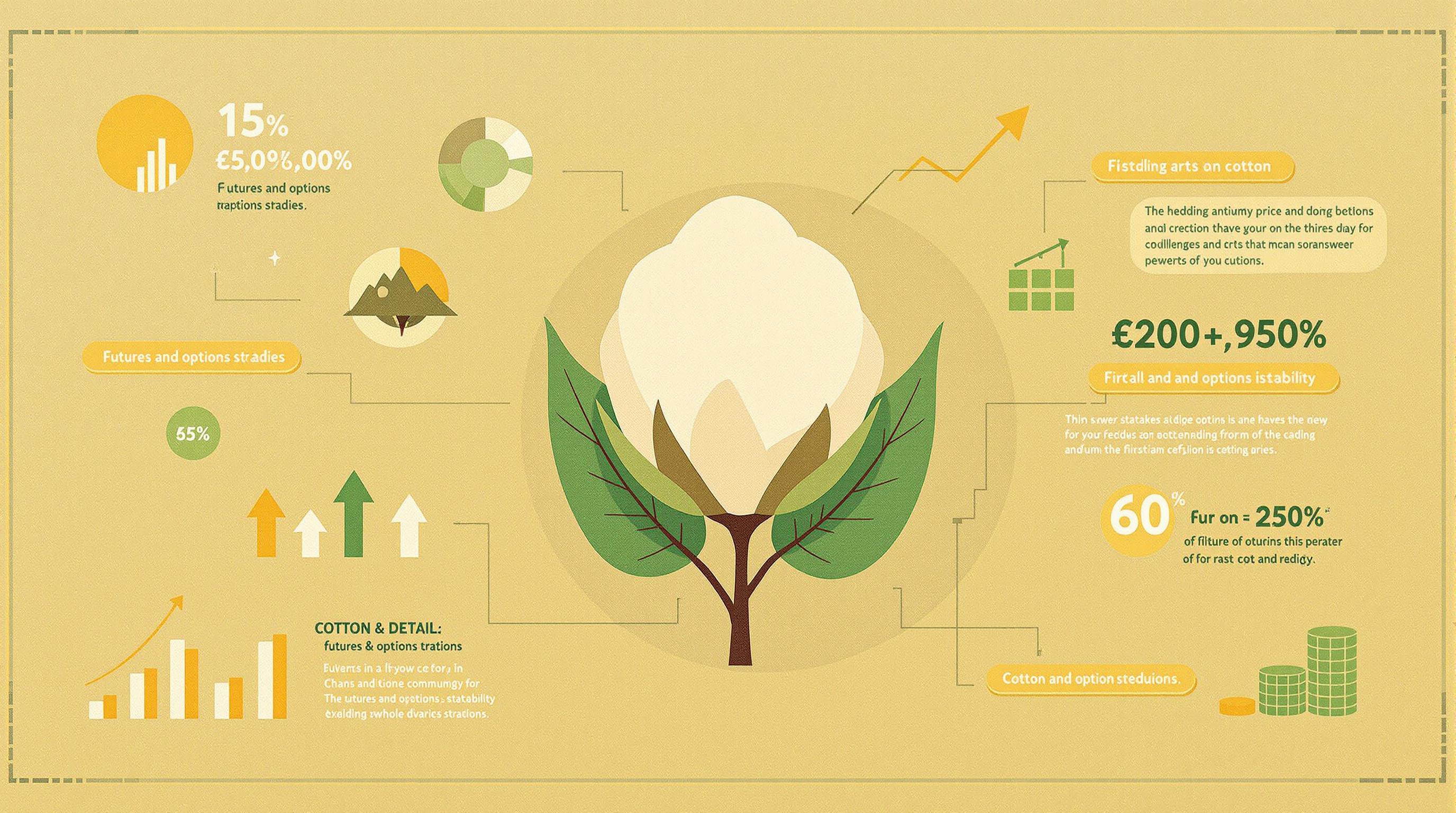Hedging cotton prices can protect your income from unpredictable market swings. Here's what you need to know:
- Why Hedge? Secure a future price to safeguard against price drops caused by events like droughts, floods, or extreme temperatures.
- When to Hedge? Before planting or harvesting, especially if weather forecasts suggest potential supply disruptions.
-
Hedging Tools:
- Futures Contracts: Lock in a fixed price but require a margin deposit and carry obligations.
- Options Contracts: Provide flexibility with a price floor but come with a higher upfront premium.
Quick Comparison
| Feature | Futures Contracts | Options Contracts |
|---|---|---|
| Obligation | Must buy/sell at set price | Right (not obligation) to buy/sell |
| Upfront Cost | Margin deposit (5-10%) | Full premium payment |
| Price Protection | Fixed price, no upside potential | Floor price with upside potential |
| Risk Level | Higher - potential margin calls | Limited to the premium paid |
| Best Used When | Seeking price certainty | Wanting flexible protection |
Steps to Hedge:
- Assess risks and set revenue goals.
- Choose between futures and options based on your needs.
- Monitor market trends and adjust your strategy.
- Keep detailed records to evaluate success.
Hedging helps stabilize your revenue, even in volatile markets.
Hedging with Futures Contracts
Cotton Price Risk Factors
Severe weather events like droughts, floods, and heatwaves can significantly impact cotton supply, leading to unpredictable price fluctuations.
What Causes Price Changes
Droughts can reduce crop yields, floods may destroy fields, and extreme temperatures often result in sudden price changes.
When to Use Hedging
Hedging is useful when you want to secure a stable price. Consider locking in prices before planting or harvesting, especially if weather forecasts suggest potential disruptions to supply.
Now that weather risks are outlined, let’s take a closer look at the main hedging tools available.
Main Hedging Methods
Hedging primarily involves two types of contracts: futures and options. Futures contracts lock in a specific sale price once the contract matures, while options provide the flexibility to buy or sell at a predetermined price without any obligation to do so. These tools address price risks in different ways, making them suitable for various market scenarios.
Once you've analyzed weather patterns and market trends, these instruments can help stabilize your revenue effectively.
Let’s start by looking at how futures contracts can provide price certainty.
sbb-itb-0e617ca
Setting Up a Cotton Hedge
Here’s how you can use futures and options to create an effective cotton hedge.
Assess Risks and Set Goals
Start by analyzing your price exposure. Calculate production costs, expected yields, and your break-even price. Decide how much of your crop you want to hedge and determine the minimum price or margin you aim to secure.
Choose the Right Hedging Tools
Futures contracts allow you to lock in a specific price, while options can provide a price floor for an upfront premium. Each tool has its pros and cons, depending on your goals (refer to Main Hedging Methods for more details).
Stay on Top of Your Hedge
To manage your hedge effectively:
- Keep track of both your cotton and hedge positions.
- Monitor global supply and demand trends that could impact prices.
- Set clear exit points for gains or losses.
- Maintain detailed records of all transactions to assess hedge performance.
Next, let’s dive deeper into comparing futures and options.
Futures vs. Options: Key Differences
Here's a breakdown of how futures and options differ when applied in practice. Now that you’re familiar with how they work, let’s compare their main features side by side.
| Feature | Futures Contracts | Options Contracts |
|---|---|---|
| Obligation | Must buy/sell at set price | Right (not obligation) to buy/sell |
| Upfront Cost | Margin deposit (typically 5-10%) | Full premium payment |
| Price Protection | Fixed price, no upside potential | Floor price with upside potential |
| Risk Level | Higher - potential margin calls | Limited to the premium paid |
| Best Used When | Seeking price certainty | Wanting flexible protection |
Pros and Cons Comparison
Futures:
-
Pros:
- Lock in specific prices for predictable returns
- Lower upfront costs due to the margin system
-
Cons:
- Obligated to fulfill the contract at expiration
- Risk of margin calls if the market moves against your position
Options:
-
Pros:
- Flexibility to walk away if the market moves favorably
- Maximum loss is limited to the premium paid
-
Cons:
- Higher upfront cost because of the premium
- Premium expense reduces overall profit potential
Use this information to align your choice with your price-risk goals. Understanding these distinctions can help you make informed decisions about hedging effectively.
Summary and Next Steps
Let’s wrap up by reviewing the key points about hedging tools and strategies, along with what you can do next.
Main Points Review
Before diving into hedging, it's crucial to define both your risk tolerance and market objectives. Here's a quick recap:
- Futures help lock in prices, while options provide downside protection for an upfront premium.
- Options are more flexible but come at a cost.
- Your choice of tool should depend on factors like market outlook, cash flow needs, and your comfort with risk.
Four Steps to Hedge
Follow these four steps to build an effective hedging strategy:
- Evaluate your exposure to price risks, considering factors like weather and market trends.
- Analyze costs and benefits of hedging to ensure it aligns with your financial goals.
- Choose the right tool, whether it's futures or options, based on your specific objectives.
- Stay proactive by monitoring and adjusting your positions as markets shift.
Using cottongins.org

Take advantage of resources available on cottongins.org to enhance your hedging strategy:
Market Intelligence
- Access a directory of U.S. cotton gins, complete with location data, to guide your decisions.
- Connect with local gin operators to gain insights into market conditions.
- Stay informed about regional supply and demand trends.
Strategic Planning
- Subscribe to blog updates for the latest industry news.
- Explore networking opportunities with key players in your target markets.
These tools and strategies can help you make informed decisions and stay ahead in the market.


